The trailer for the upcoming The Batman movie looks pretty darn awful, once again doubling down on the gloom without any hint of what makes the source material so much fun in the first place. That said, I suppose the film can still get some of my goodwill if, instead of just giving us yet another self-serious take on superheroes, it ends up exploring Batman’s umbilical relation with crime fiction.
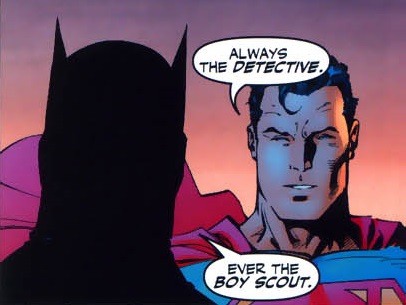 Batman #612
Batman #612
My ideal Dark Knight is the World’s Greatest Detective and I love it when Batman stories amount to eccentric mystery yarns, something that has been largely lost even in the comics, although it still occasionally pops up (like in Becky Cloonan’s and Terry Dodson’s cool short story ‘The Fool’s Journey,’ from the latest Batman: Black and White series). The link to crime fiction – which harkens back to the character’s sadistic origins – was probably taken as far as it can go in 1987’s Batman: Year One, although there are plenty of other hardboiled books that should please fans of the genre, including some of the sequels to Year One (Catwoman: Her Sister’s Keeper, The Long Halloween, hell, even Prey) and a handful of 21st-century entries (Broken City, City of Crime), not to mention Elseworlds’ pastiches (Nine Lives, Gotham Noir).
Once you stretch your definition of Batman comics, there is even more crime-ridden goodness to check out there, likewise geared towards ‘mature’ audiences who enjoy a fair amount of sex and violence (although, for some odd puritan reason, not much swearing) in their cape-adjacent escapades… These books occupy a stimulating place in Batman lore, either contextualizing the Dark Knight’s actions by shedding light on the police authority he replaces – thus questioning if, why, when, and how it needs to be replaced – or humanizing the personal dramas and motivations of the criminal underworld targeted by the Caped Crusader, thus challenging his caricatural worldview. If you want to see this done particularly well, here are five Gotham-set graphic novels collecting tales where the Dark Knight isn’t the main star, but which are nevertheless obligatory readings for those who dig the franchise’s connection to hard-hitting narratives about cops and crooks:
GORDON OF GOTHAM (2014)
In order to capitalize on the Gotham TV show, in 2014 DC put out this beauty collecting three badass mini-series from the mid-nineties about Gotham City’s police force (which, as the book reminds us, has more bent cops than a Sidney Lumet film or the average season of Line of Duty). Very gritty – and it looks the part – but pleasingly unpretentious, Gordon of Gotham is a truly compelling crime book…
The first chunk of the collection features Gordon’s Law (by Chuck Dixon and Klaus Janson, with grimy colors by Kevin Somers), a taut yarn about Commissioner James Gordon getting his hands dirty while investigating a violent heist at the Federal Reserve. There is tough-talking dialogue all around, but also a punchy, intricate plot with a twist ending that masterfully mines the medium’s visual tropes, such as atmospheric shadows and hard rain. Another great procedural, G.C.P.D. (by Chuck Dixon, Jim Aparo, and Bill Sienkiewicz) has more of a Hill Street Blues or Chicago P.D. vibe, with different officers crossing paths while working on separate cases… Is it copaganda? I suppose so, in the same way that Batman-centric narratives romanticize vigilantism, but – like those – once you take these tales for the dark fantasy that they undoubtedly are, they can make for a pretty entertaining read. Finally, the titular Gordon of Gotham (by Dennis O’Neil, Dick Giordano, and Klaus Janson) revisits Jim’s past as a lieutenant in Chicago (which seems to be almost as corrupt as Gotham!). It’s a clumsier thriller than the previous ones, but it’s interesting to see the post-hippie Denny O’Neil writing a conservative protagonist while negotiating his ambiguous attitude towards law enforcement (notably, these are all post-Rodney King comics, with two of the stories opening with indictments of police brutality).
This volume also works as a kind of retroactive prequel to the brilliant Gotham Central.
CATWOMAN: TRAIL OF THE CATWOMAN (2011)
This collection of Catwoman stories from the early 2000s explores the moral ambiguity of cat burglar Selina Kyle, one the most famous (and most captivating) Gotham citizens. There are tense heists, dangerous gangsters, self-destructive private eyes, and dirty cops galore, all rendered in a noirish style akin to Batman: The Animated Series. The tales in this paperback formed a soft reboot of Catwoman, so there isn’t much you really need to know going in other than the fact that Selina, who had recently tried to blackmail Gotham’s mayor, was officially dead at the time (a plot thread that gets wrapped up early on). That said, longtime fans will probably appreciate the nods to Batman: Year One and to Catwoman: Her Sister’s Keeper.
The book opens with ‘Selina’s Big Score,’ a magnificent caper written and drawn by Darwyn Cooke, in which Selina puts together a crew to rob a train full of mob money (did it inspire the last season of Breaking Bad?). It’s one of those nifty thrillers where each chapter follows a different character’s perspective, and of course the twists never stop coming. Cooke also illustrates the titular ‘Trail of the Catwoman,’ written by Ed Brubaker, where the mayor hires tough-as-nails detective Slam Bradley to find our missing protagonist (ideally, this one should be read before ‘Selina’s Big Score,’ but since both stories play around with non-linear chronology it works fine this way as well). It’s only in the third tale, ‘Anodyne,’ that Selina returns to her Catwoman persona, as she finds her place back in Gotham’s East End while tracking down a serial killer of prostitutes. The final stories then go on to deal with the grimmer sides of drug traffic and addiction. (Seriously, don’t be fooled by the cartoony artwork – these comics are emphatically not aimed at kids!)
Underneath it all, you can hear echoes of the voices of Richard Stark, Raymond Chandler, Chester Himes, and Elmore Leonard. Cinema is also a clear influence, with characters blatantly inspired by Pam Grier, Lee Marvin, and Chow Yun-Fat, not to mention the Tarantino-esque structure. Regardless, these are pure comics, making the most out of the medium’s possibilities, from the stylized designs to the gripping pace, shaped as much by literary captions as by striking visuals… In particular, the whole thing is brought together by the awesome work of colorists Matt Hollingsworth, Lee Loughridge, and Giulia Brusco, as well as letterers Sean Konot and Willie Schubert, who fully embrace the retro-noir mood.
GOTHAM CENTRAL: IN THE LINE OF DUTY (2008)
Undisputedly one of the greatest comic book series set in Batman’s corner of the DC Universe, Gotham Central was a police procedural about the city’s Major Crimes Unit, adult in content and tone – by which I mean not just occasional references to sexual violence, but also an exceptional degree of storytelling sophistication. The cops are our main POV characters here, although – like in Gordan of Gotham – this is not to say the police is presented in an exclusively positive light. Originally published in 2002-2006, with alternating scripts written – and sometimes co-written – by Greg Rucka and (again) Ed Brubaker, Gotham Central remains well-remembered for its witty dialogue, tight plotting, attention to detail, and realistic world-building, on top of penciller Michael Lark’s enviable sense of physiognomy and geography. Just as Lark obsessively and meticulously rendered each character and setting, so did Rucka and Brubaker invest in fleshing out the cast and institutions… Here were two of the medium’s most accomplished crime writers at the top of their game (Rucka is a pretty good crime novelist as well, having penned the neat series of books about the bodyguard Atticus Kodiack). For instance, consider how, in the excerpt above, the conversation fluidly integrates both real-world, professional slang (‘the vic’) and speculative, Gotham-specific expressions (‘the Bat’).
By imagining how a frustrated police department would cope with the Dark Knight’s vigilantism and his rogues’ gallery, we get a fascinating exploration of the disturbing tension between the realistic and fantastic elements of Batman comics. This theme is powerfully conveyed in the jarring opening sequence, where the shift in perspective is enough to make a scene we’ve seen countless times before now come across as particularly shocking. Sticking to the cops’ street-level POV means that not only do the colorful villains seem scarier (if sometimes pathetic), but so do the occasional cameos by the Caped Crusader, who comes off like a larger-than-life force of nature.
The first edition of Gotham Central: In The Line of Duty, from 2004, only collected the first two arcs (i.e. the first five issues). It was not a bad deal, but you’ll get more bang for your buck if you get the collection that has been coming out since 2008, which also includes the series’ third – and by far most famous – arc, ‘Half a Life,’ which had a dramatic impact on fan-favorite character Renée Montoya.
HITMAN: TEN THOUSAND BULLETS (2010)
If you like your crime fiction with more of a comedic – and action-oriented – edge, then look no further than Hitman (and I don’t mean Hit Man, the blaxploitation remake of Get Carter, although that one is quite cool as well…). This cult series revolved around anti-hero Tommy Monaghan, a Gotham-based killer-for-hire with telepathy and x-ray vision who rarely used either because they made his head hurt… which should give you an idea of the comic’s overall attitude, playfully acknowledging the outlandish reality of its DCU setting but preferring to focus on more human-level crime stories taking place in the working-class periphery of Batman’s world. Creators Garth Ennis and John McCrea jointly crafted quite an idiosyncratic vibe halfway between slapstick caricature and heartfelt characterization, somehow managing to produce genuine pathos along the way.
Hitman’s second trade collection is the one I would recommend to crime fans, since it’s less about superheroes or other supernatural elements and more about people shooting at each other in-between droll conversations (with a couple of war flashbacks thrown in for good measure). The book opens with the titular arc ‘Ten Thousand Bullets,’ in which Tommy gets a contract put on his head by a vengeful gangster who carries around the corpse of his dead Siamese twin (still attached to his body). In the wonderful ‘The Night the Lights Went Out,’ Tommy and his buddies, while waiting for the superheroes to sort out the latest apocalyptic event outside, barricade themselves in a bar and exchange tales about when they came close to death (this taps into the series’ metafictional dimension, as each supporting character reflects a different macho subgenre: classic John Wayne-ish narratives, blaxploitation, Hong Kong gun fu, dumb grindhouse shlock). Finally, ‘A Coffin Full of Dollars’ – drawn by Carlos Ezquerra and Steve Pugh – follows an assignment in Texas that turns into a gonzo spaghetti western homage.
The result is as much about male bonding as it is about crime, violence, and laughs. Yep, it’s like someone let Guy Ritchie into the DC Universe.
NIGHTWING: FALSE STARTS (2015)
The other reliable source of kickass crime and action in the late 90s’ Bat-books was Nightwing, which focused on the vigilante exploits of (former Robin) Dick Grayson. Even before Chuck Dixon turned it into a proper cop series by having Dick join the police force of the neighboring city of Blüdhaven, this comic leaned heavily on genre tropes from early on, especially in the tales collected in False Starts, which are full of mobsters double-crossing each other, undercover operations gone wrong, and further proof that they should definitely defund the GCPD!
In the first story, ‘Cosa Nostra’ (mistitled in the table of contents as ‘Casa Nostra,’ which wouldn’t have been a bad name…), Nightwing runs against another crimefighter – the loose cannon Huntress – when trying to prove that a wiseguy is innocent of killing a sex worker because he was busy committing a whole other felony at the time. Illustrated by Greg Land (whose cheesecake style is suitably roughed up by Bill Sienkiewicz’s inks) and sharply scripted by Devin Grayson, this is an unsung gem, delivering a labyrinthine plot with a fast pace and plenty of nice character beats.
In the rest of the book, we once again get to see Dixon’s talent for penning fun, frantic thrill rides, pitting Dick Grayson against both sides of the law in Blüdhaven, especially in an adrenaline-charged arc involving a copycat vigilante who unintentionally lures in everyone who has a grudge against Nightwing (which, as it turns out, is a lot of people!). There are a number of guest appearances (Barbara ‘Oracle’ Gordon should practically get second billing) and subplots picking up from – or leading into – other books, but these issues belong to that great tradition of comics where you usually get enough context clues and satisfying payoffs to get your money’s worth without having to chase down a dozen other collections (one exception is the chapter ‘Paper Revelations,’ which is part of a convoluted martial arts crossover). In particular, I have a soft spot for the self-contained murder mystery ‘The Forgotten Dead,’ where Dick actually does quite a bit of detective work while investigating a 15-year-old cold case concerning a gang killing.
And, as a bonus, we also get some bombastic artwork by Scott McDaniel and Karl Story, distinctly drenched in Roberta Tewes’ moody colors:

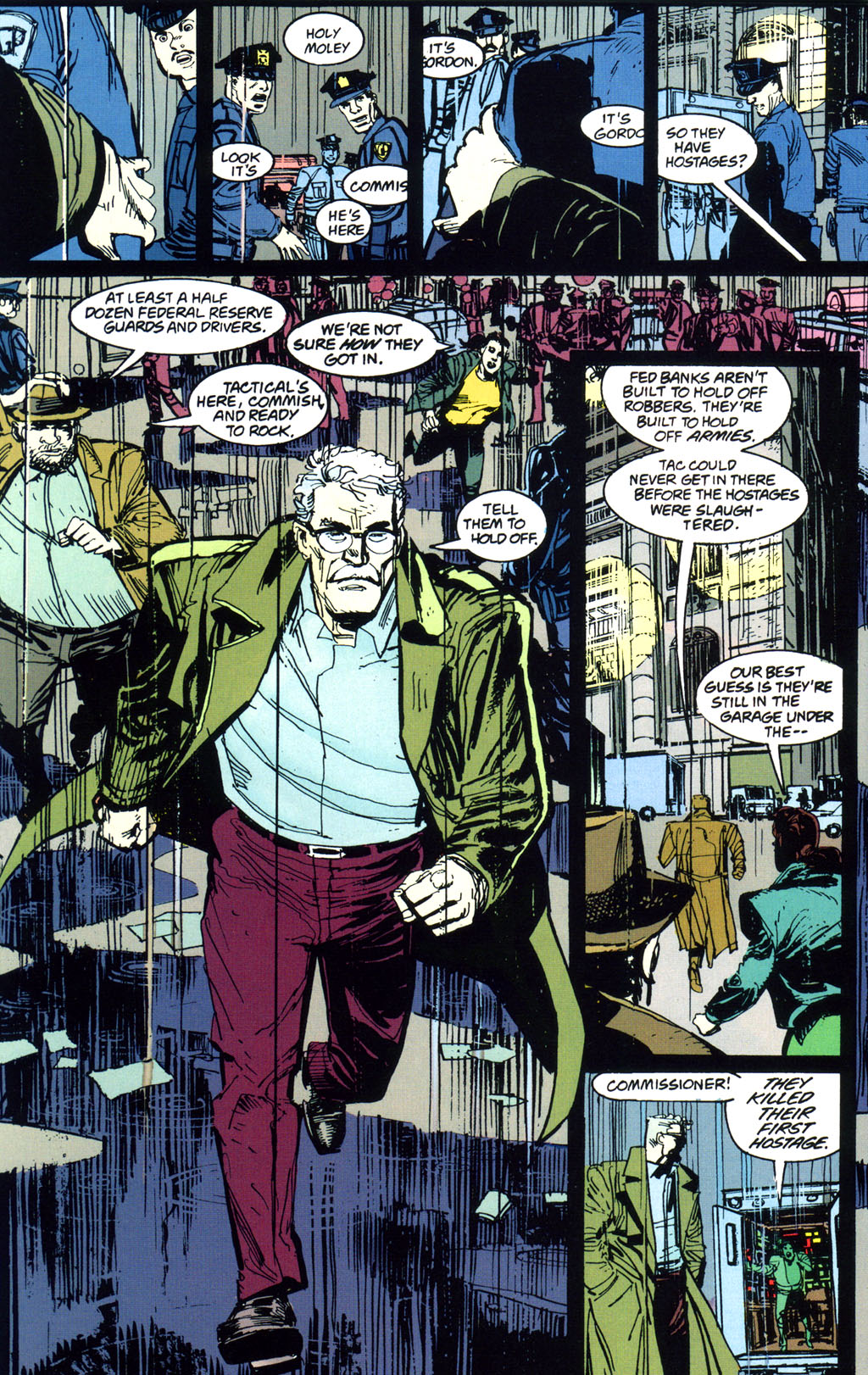
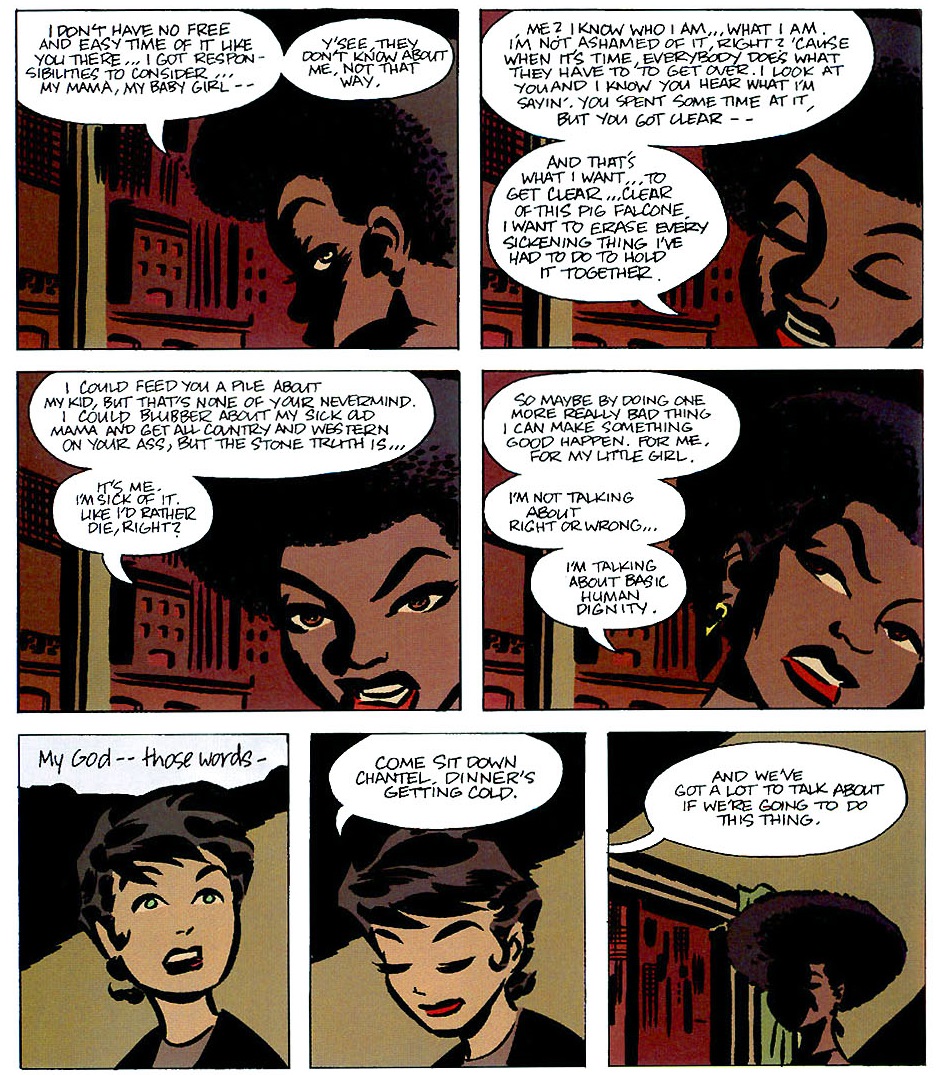
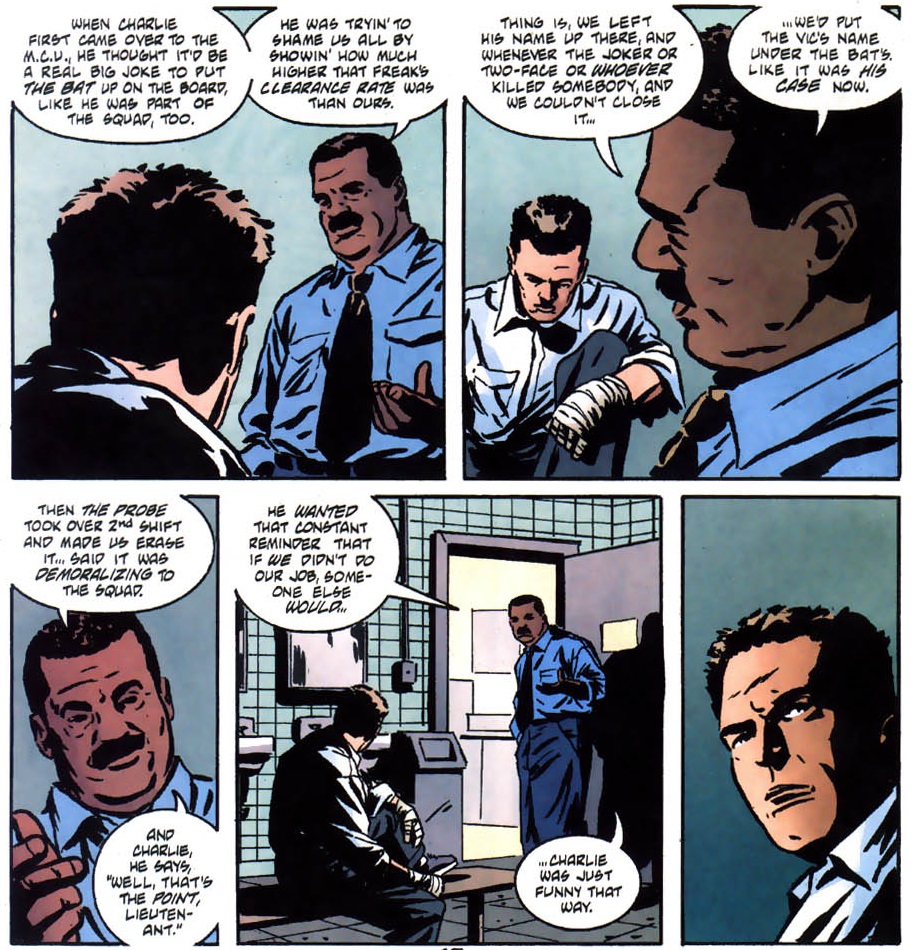
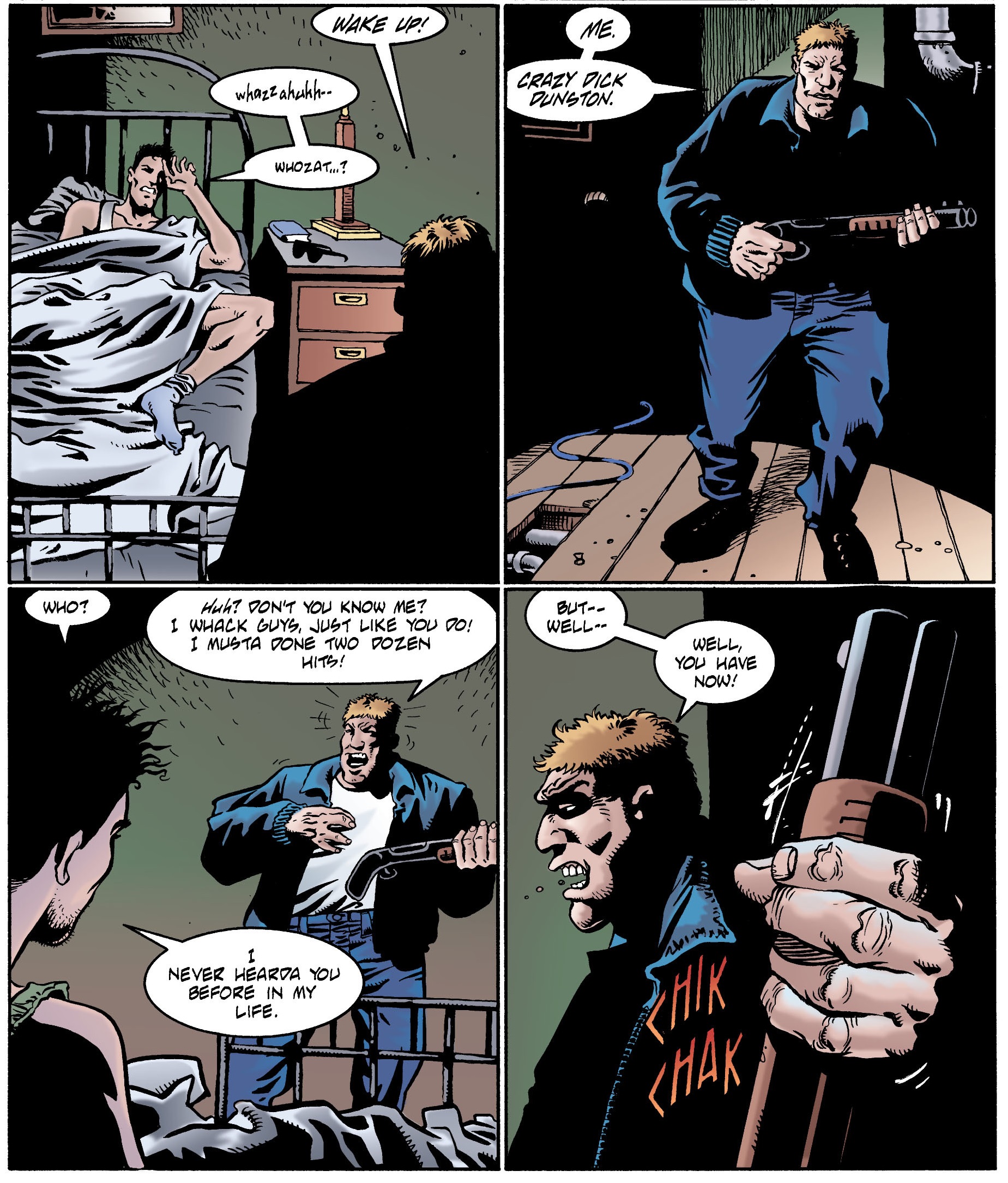
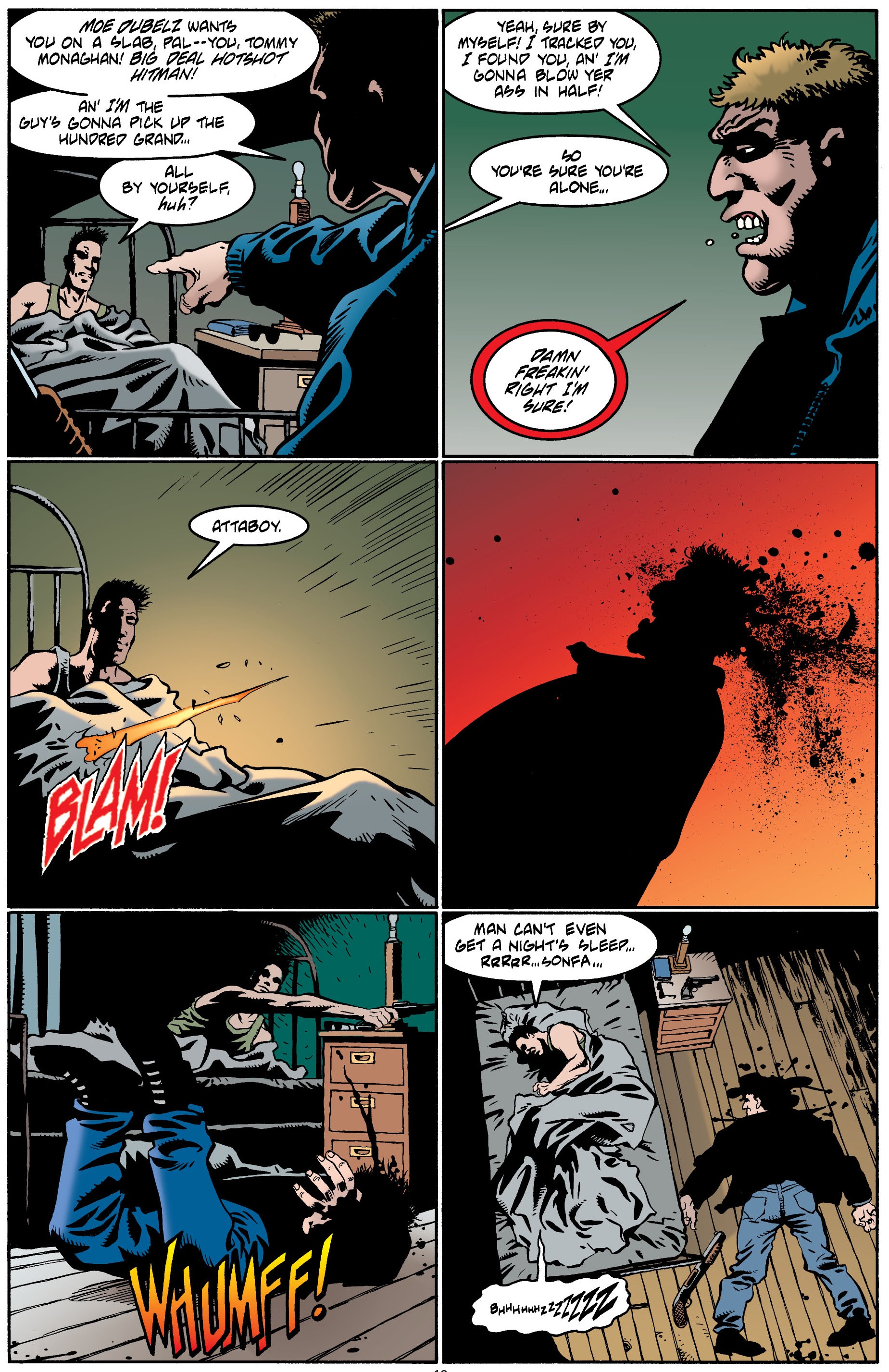
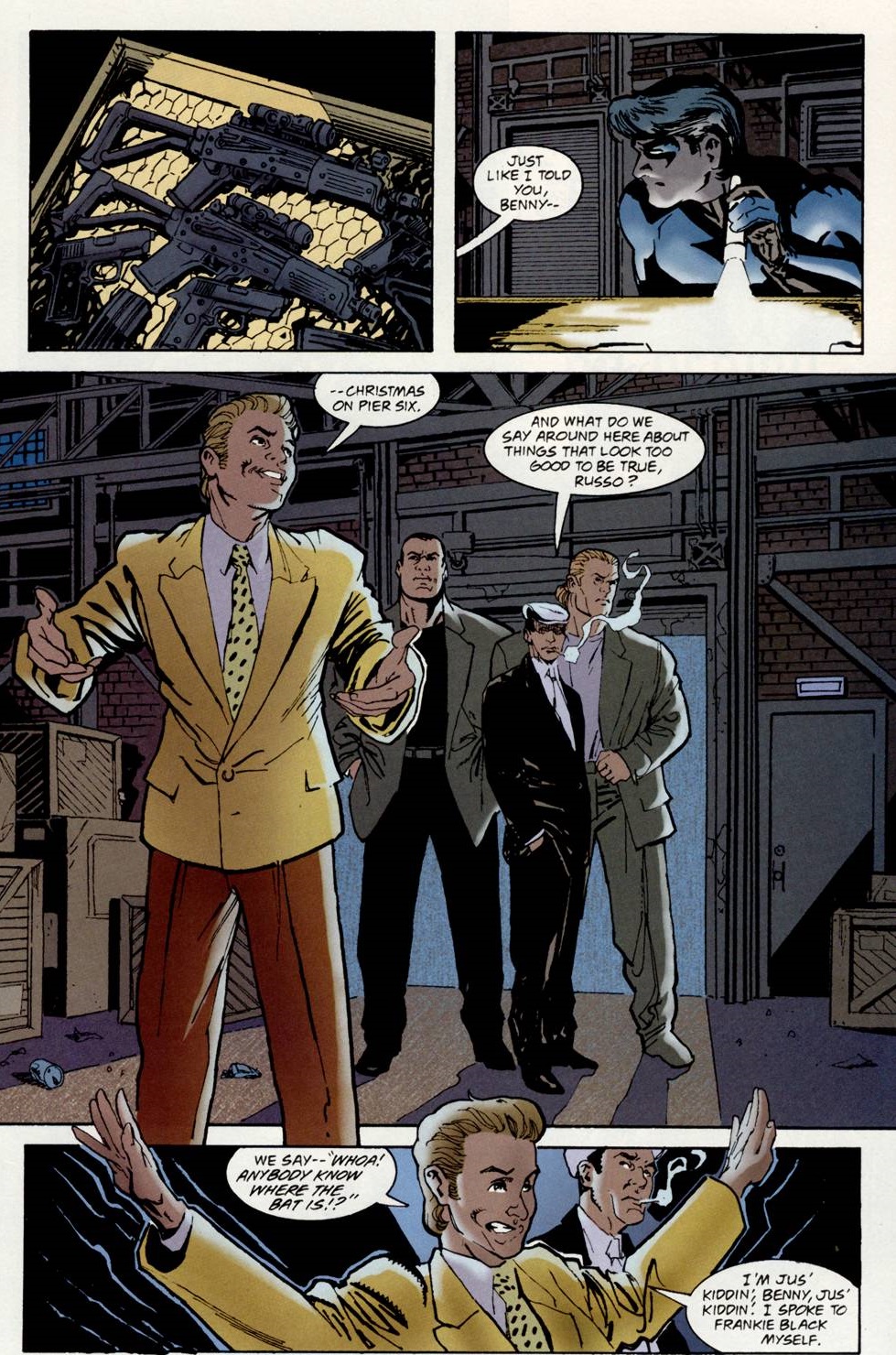
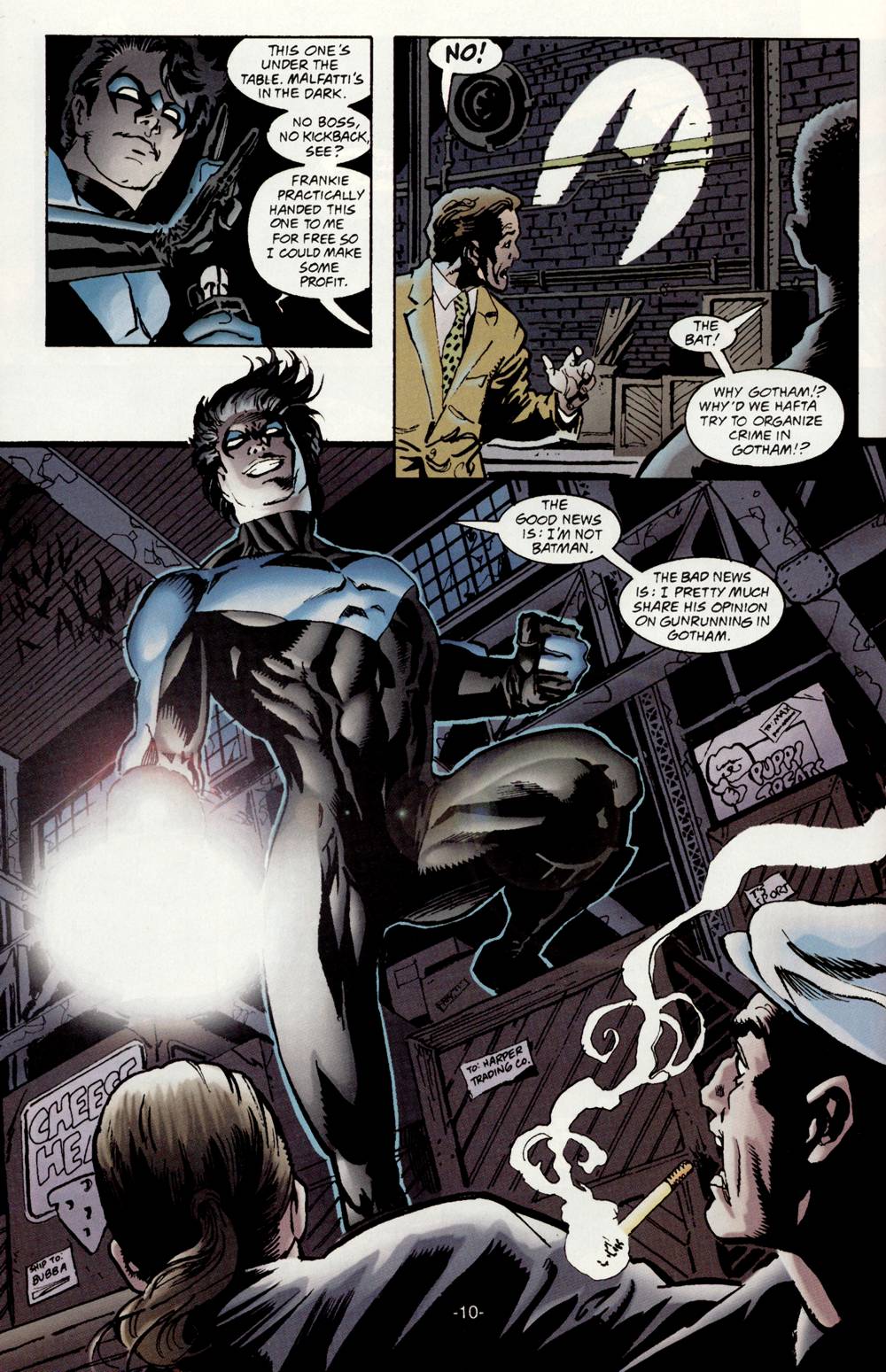
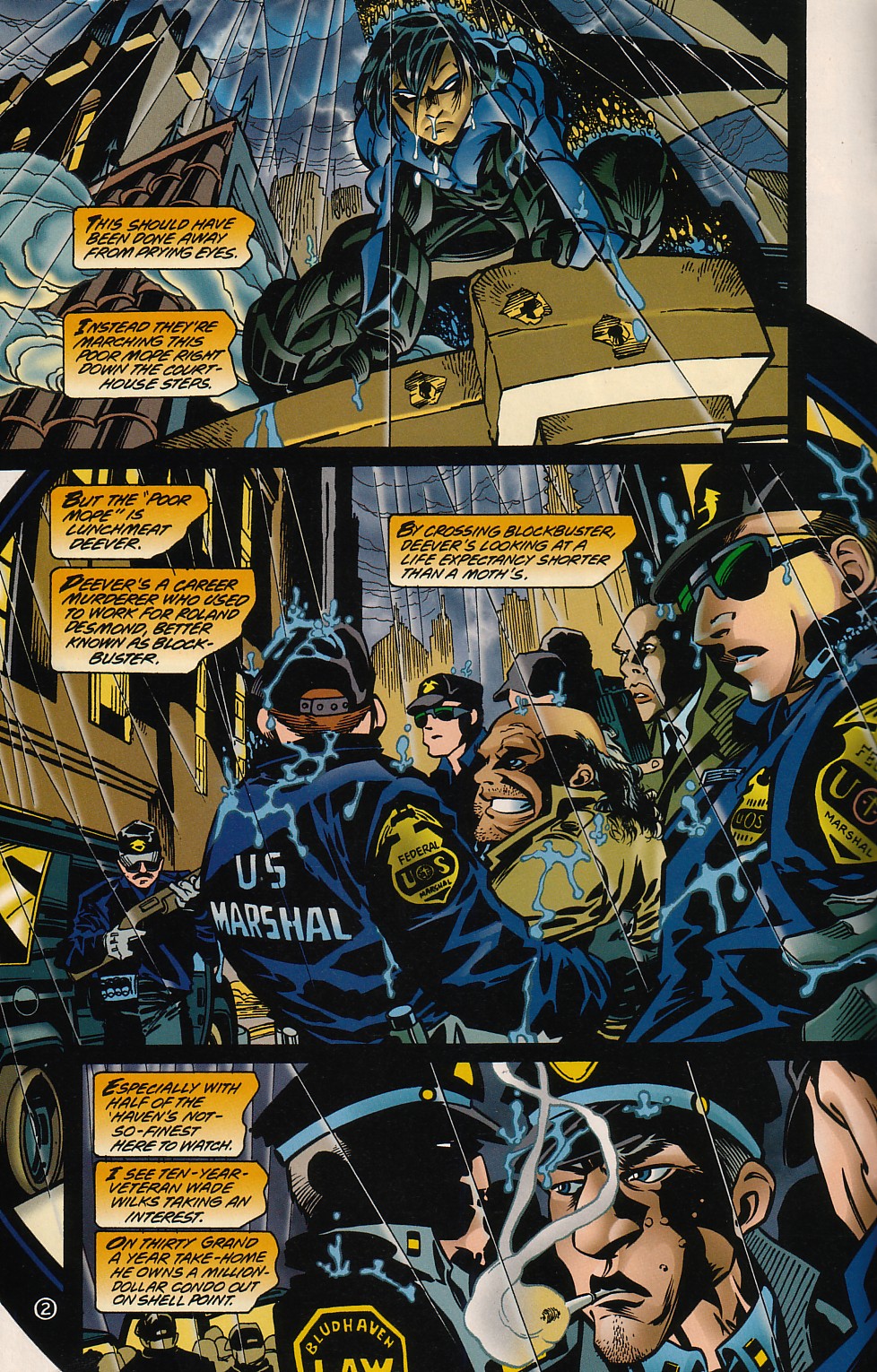
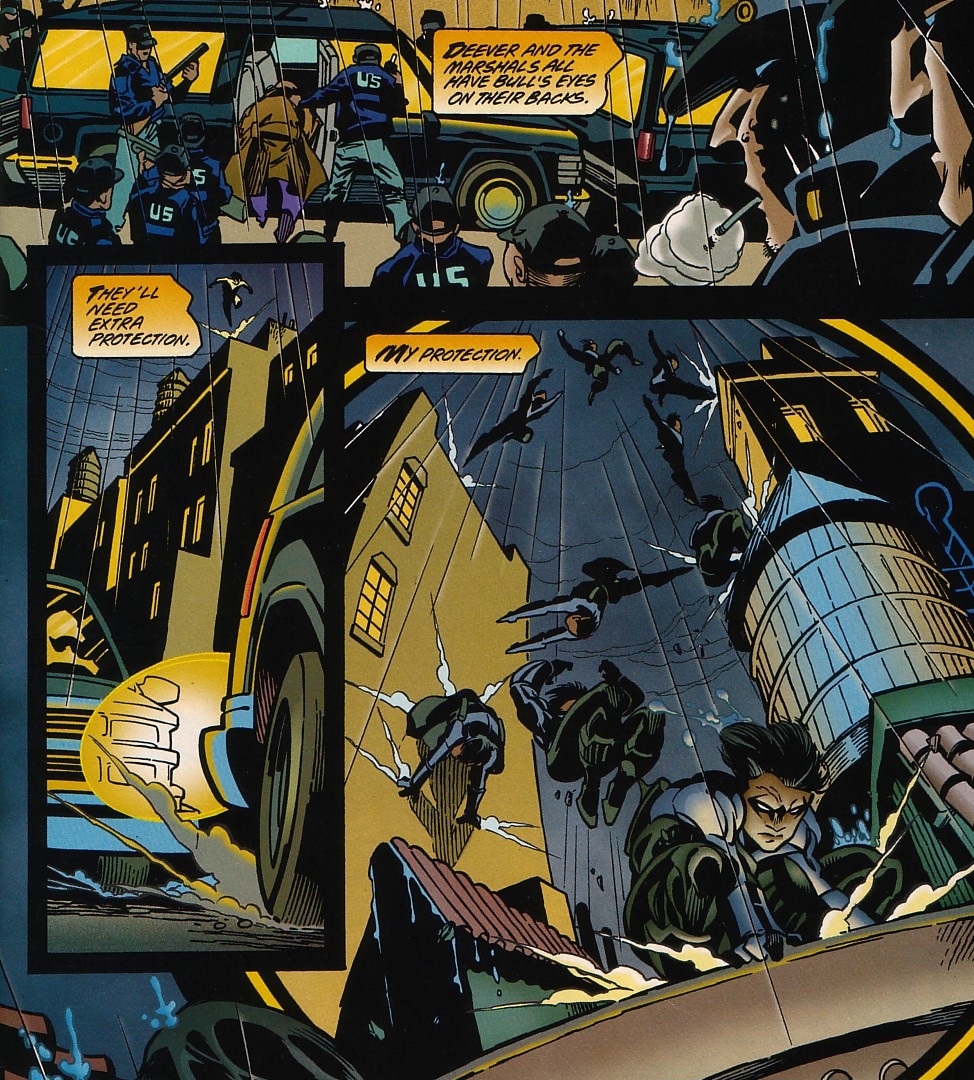
Great picks! Personally, Darwin Cooke Catwoman’s and Gotham Central are some of the best Batman comics DC ever published. Gotham Central is one that I don’t really believe they published and that it last so many issues. How these comics were not been adapted to TV is baffling to me.
If I may recommend last year, Joker comics is also a really fun crime comic featuring Gordon.